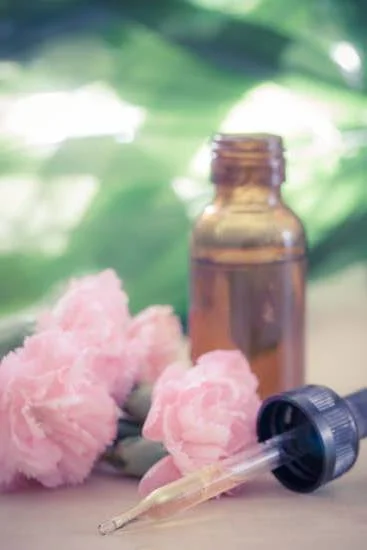Aromatherapy, a holistic healing practice that utilizes essential oils for various therapeutic purposes, has gained significant popularity in recent years. Many individuals turn to aromatherapy as a complementary therapy option for managing their asthma symptoms. This article aims to explore the concept of aromatherapy and its potential benefits for asthma patients.
Asthma is a chronic respiratory condition characterized by inflammation and narrowing of the airways, leading to symptoms such as wheezing, coughing, chest tightness, and shortness of breath. While conventional medical treatments such as inhalers and medications play a crucial role in managing asthma, some people seek alternative approaches like aromatherapy to alleviate their symptoms.
Aromatherapy involves the use of highly concentrated plant extracts called essential oils, known for their unique scents and therapeutic properties. These essential oils can be inhaled or applied topically, with each oil believed to have specific effects on the body and mind. In the context of asthma, certain essential oils are thought to possess anti-inflammatory, bronchodilatory, and immunomodulatory properties that may help provide relief from inflammation and reduce asthma symptoms.
By understanding the basic concept of aromatherapy and its potential benefits for asthma patients, individuals with asthma can explore this complementary therapy option alongside their conventional treatments.
The following sections will delve deeper into the specifics of asthma, the role of aromatherapy in managing symptoms, scientific evidence supporting its use, popular essential oils used for asthma relief, safe usage guidelines, personal stories from individuals who have found relief through aromatherapy, incorporating it with traditional treatments for better results, and finally summarizing the benefits and limitations of aromatherapy for asthma.
Understanding Asthma
Asthma is a chronic respiratory condition that affects millions of people worldwide. It is characterized by inflammation and narrowing of the airways, leading to symptoms such as wheezing, coughing, shortness of breath, and chest tightness. Understanding asthma and its triggers is crucial for managing the condition effectively.
Symptoms of asthma can vary from person to person and may range from mild to severe. Common symptoms include recurring episodes of coughing, especially at night or in the early morning; wheezing, which is a whistling sound when breathing out; shortness of breath or rapid breathing; and chest tightness or pain.
These symptoms may be triggered by various factors, including allergens such as pollen, dust mites, pet dander; irritants such as smoke, perfume, chemicals; respiratory infections; exercise; stress; and certain medications.
To effectively manage asthma, it is essential to identify and avoid triggers whenever possible. By doing so, individuals with asthma can reduce the frequency and severity of their symptoms. It is also important to work closely with a healthcare professional to develop an individualized treatment plan that may include medications such as inhalers or oral medications to control inflammation and open up the airways.
In addition to medical treatments, many individuals with asthma have explored complementary therapies like aromatherapy to alleviate their symptoms. Aromatherapy involves the use of essential oils derived from plants for therapeutic purposes. While scientific evidence on the effectiveness of aromatherapy for asthma remains limited, some studies suggest that certain essential oils may have anti-inflammatory, bronchodilator (airway-opening), and relaxant properties that could potentially provide relief for asthma symptoms.
The Role of Aromatherapy
Aromatherapy is an alternative therapy that involves the use of essential oils derived from plants to promote wellness and improve overall health. When it comes to asthma, aromatherapy has shown potential in providing relief for symptoms associated with this chronic respiratory condition.
One way in which aromatherapy can help asthma patients is by reducing inflammation and opening up the airways. Essential oils such as peppermint, eucalyptus, and lavender have been found to have anti-inflammatory properties, which can help reduce bronchial constriction and make breathing easier. In addition, these essential oils have a relaxing effect on the muscles surrounding the airways, helping to alleviate coughing and wheezing.
Another benefit of aromatherapy for asthma is its ability to promote relaxation and relieve stress. Stress and anxiety can be triggers for asthma attacks, so finding ways to manage these emotions is crucial for individuals with asthma. Essential oils like chamomile and bergamot have been shown to have calming properties that can help reduce stress levels and improve overall well-being.
It’s important to note that while aromatherapy may provide relief for some asthma symptoms, it should not be considered a substitute for traditional medical treatments. Aromatherapy should be used as a complementary therapy alongside prescribed medications and under the guidance of a healthcare professional. It’s essential for asthma patients to work closely with their doctors to develop an integrated treatment plan that incorporates both traditional therapies and alternative options like aromatherapy.
In summary, aromatherapy has potential benefits for individuals with asthma by reducing inflammation, opening up the airways, promoting relaxation, and relieving stress. However, further research is needed to fully understand its efficacy in treating this condition. If you’re considering using aromatherapy as a complementary therapy for your asthma symptoms, it’s important to consult with your doctor first to ensure safe usage and prevent any potential interactions with medications or allergies.
Scientific Evidence
A growing body of scientific evidence suggests that aromatherapy can be a beneficial complementary therapy for asthma patients. Several studies and research papers have been conducted to investigate the effectiveness of using essential oils in alleviating asthma symptoms. These studies provide valuable insights into how aromatherapy can potentially provide relief for individuals living with asthma.
Evidence from Randomized Controlled Trials
Randomized controlled trials (RCTs) are considered the gold standard when it comes to scientific research. These trials involve randomly assigning participants to different groups, one receiving the treatment (in this case, aromatherapy) and the other receiving a placebo or no treatment. Numerous RCTs have been conducted to evaluate the effects of essential oils on asthma symptoms.
For example, a study published in The Journal of Alternative and Complementary Medicine found that inhaling lavender essential oil significantly improved lung function and reduced respiratory symptoms in adults with bronchial asthma. Another RCT published in The International Journal of Nursing Practice found that using eucalyptus essential oil as an inhalant resulted in decreased dyspnea (shortness of breath) and improved overall respiratory function in adults with moderate or severe persistent asthma.
Benefits Reported in Clinical Trials
In addition to RCTs, clinical trials have also demonstrated positive outcomes for asthmatics using aromatherapy. A clinical trial published in Evidence-Based Complementary and Alternative Medicine investigated the effects of a blend of essential oils on children with chronic bronchial asthma. The results showed that the participants experienced significant reduction in symptoms such as wheezing, coughing, and shortness of breath after aromatherapy intervention.
Furthermore, another clinical trial published in Complementary Therapies in Medicine evaluated the effects of a combination therapy involving essential oils on adolescent females with bronchial asthma. The findings revealed that the aromatherapy intervention significantly reduced asthma symptoms, improved lung function, and enhanced overall quality of life in the participants.
These studies and clinical trials provide compelling evidence supporting the use of aromatherapy for managing asthma symptoms. However, it is important to note that more research is still needed to fully understand the mechanisms through which essential oils work and to establish standardized guidelines for their use in asthma management. Therefore, individuals should consult with healthcare professionals and seek guidance before incorporating aromatherapy into their treatment plan.
Popular Essential Oils
Lavender Oil
One of the most popular essential oils for treating asthma is lavender oil. Known for its calming and soothing properties, lavender oil can help reduce stress and anxiety, which are common triggers for asthma attacks.
Its anti-inflammatory properties can also help alleviate the inflammation of the airways that occurs during an asthma attack. To use lavender oil for asthma, you can add a few drops to a diffuser or inhaler, or dilute it with a carrier oil and apply it topically to the chest.
Peppermint Oil
Peppermint oil is another essential oil that can provide relief for asthma symptoms. It contains menthol, which has both bronchodilator and decongestant properties. Bronchodilators help relax the muscles in the airways, making breathing easier, while decongestants can relieve nasal congestion often associated with asthma. You can inhale peppermint oil directly from the bottle or add a few drops to hot water for steaming inhalation.
Eucalyptus Oil
Eucalyptus oil is commonly used in many over-the-counter cold and cough remedies due to its expectorant properties. For asthmatics who experience excess mucus production during an attack, eucalyptus oil can help thin and loosen phlegm, making it easier to expel from the lungs.
The strong aroma of eucalyptus oil also acts as a natural decongestant by opening up blocked nasal passages. Dilute eucalyptus oil with a carrier oil and apply it to the chest or mix a few drops with boiling water for steam inhalation.
It’s important to note that while these essential oils have shown promise in managing asthma symptoms, individual responses may vary and what works for one person may not work for another. Therefore, it is advisable to consult with a healthcare professional before incorporating any new treatment into your asthma management plan.
Safe Usage
When considering aromatherapy as a complementary therapy for asthma, it is important to ensure safe usage to maximize its potential benefits. While essential oils can provide relief for asthma symptoms, improper use can be harmful and may trigger respiratory distress. Therefore, it is crucial to follow precautions and guidelines to guarantee the safe and effective use of aromatherapy in asthma treatment.
Firstly, it is essential to consult with a healthcare professional before using aromatherapy for asthma. They can provide guidance on which essential oils are suitable for individual needs and help assess if there are any possible contraindications or interactions with existing medications. This step is especially crucial for individuals with severe or poorly controlled asthma, as well as those with underlying medical conditions.
Correct dilution of essential oils is another critical aspect of safe usage. Essential oils are highly concentrated substances that should never be applied directly to the skin or ingested. Instead, they should always be diluted properly in a carrier oil, such as jojoba oil or almond oil. The recommended dosage of essential oil varies depending on the type and purpose, so it is crucial to follow established guidelines or seek advice from a certified aromatherapist.
Furthermore, it is vital to choose high-quality essential oils from reputable sources. Poor-quality oils may contain synthetic additives or impurities that can worsen asthma symptoms or cause adverse reactions.
Look for oils that are labeled as 100% pure and therapeutic grade. Additionally, some individuals may have specific sensitivities or allergies to certain essential oils, so it is wise to perform a patch test before use by applying a small amount of diluted oil on the inner forearm and monitoring any reactions over 24 hours.
Finally, ensure proper ventilation when using aromatherapy at home. Open windows or use fans to ventilate the room where you are diffusing the essential oils. This can help prevent the accumulation of volatile organic compounds (VOCs) and other potentially irritating substances that could trigger asthma symptoms.
By following these precautions and guidelines, individuals with asthma can safely incorporate aromatherapy into their treatment plan. However, it is crucial to remember that aromatherapy should not replace traditional asthma medications prescribed by healthcare professionals. Instead, it should be used as a complementary therapy to provide additional relief and support in managing asthma symptoms.
Personal Stories
Aromatherapy has gained popularity as a complementary therapy option for managing asthma symptoms. Many individuals with asthma have shared their personal stories and experiences, highlighting the potential benefits of using essential oils to alleviate their symptoms.
One such success story comes from Sarah, who was diagnosed with asthma at a young age. Despite a strict medication regimen prescribed by her doctor, she still experienced frequent wheezing and shortness of breath. Desperate to find relief, Sarah turned to aromatherapy and started using lavender essential oil in a diffuser in her bedroom.
She noticed an immediate improvement in her symptoms, particularly during the night when she would usually experience difficulty breathing. Now, she continues to use lavender oil regularly and has significantly reduced her reliance on asthma medications.
Another individual, John, found relief from his exercise-induced asthma through the use of eucalyptus essential oil. Before discovering aromatherapy, John would often have to avoid physical activities due to the severe coughing and tightness in his chest that exercise would trigger.
However, after incorporating eucalyptus oil into his pre – and post-workout routine by inhaling it or applying it topically diluted with carrier oil, he noticed a reduction in the intensity and frequency of his asthma symptoms. This enabled him to resume regular exercise without fear of triggering an asthma attack.
While these personal stories are promising, it’s important to note that everyone’s experience with aromatherapy may vary. What works for one person may not work for another due to individual differences in response to treatment. It is always recommended to consult with a healthcare professional before starting any new therapy or making changes to existing treatment plans.
By sharing these personal stories, individuals like Sarah and John hope to inspire others with asthma to explore the potential benefits of aromatherapy for managing their symptoms. Although it may not be a standalone treatment for asthma, aromatherapy could serve as an additional tool in an individualized approach to asthma management.
Consulting with a healthcare professional and finding the right essential oils to suit one’s unique needs and preferences is crucial in achieving the best possible outcomes when incorporating aromatherapy into an asthma treatment plan.
Combining with Traditional Treatments
Asthma is a chronic respiratory condition characterized by inflammation and narrowing of the airways, leading to symptoms such as wheezing, shortness of breath, coughing, and chest tightness. While traditional medications such as inhalers and steroids are essential for managing asthma symptoms, some individuals may find additional relief through complementary therapies like aromatherapy. Aromatherapy involves using essential oils derived from plants to promote physical and emotional well-being.
When used in conjunction with traditional asthma medications, aromatherapy can potentially enhance the effectiveness of treatment and provide additional relief for asthma symptoms. The use of essential oils can help reduce stress and anxiety, which are common triggers for asthma attacks. Additionally, certain essential oils have anti-inflammatory properties that can help reduce airway inflammation and open up the airways.
It’s important to note that aromatherapy should not be used as a substitute for prescribed asthma medications but rather as a complementary therapy. It is always recommended to consult with a healthcare professional before incorporating aromatherapy into an asthma treatment plan. They will be able to provide guidance on the specific essential oils to use and the appropriate methods of application.
| Essential Oil | Properties |
|---|---|
| Lavender | Anti-inflammatory properties; promotes relaxation |
| Peppermint | Opens up the airways; provides cooling sensation |
| Eucalyptus | Anti-inflammatory and decongestant effects; clears the airways |
Overall, combining aromatherapy with traditional treatments can be a beneficial approach for individuals with asthma. It’s important to use high-quality essential oils and follow safety guidelines to prevent any adverse effects.
Aromatherapy should be used as part of a comprehensive treatment plan, incorporating lifestyle changes, medication adherence, and regular medical check-ups for optimal management of asthma symptoms. Further research is needed to fully understand the mechanisms and effectiveness of aromatherapy in asthma management, but many individuals have reported positive experiences with this complementary therapy option.
Conclusion
In conclusion, aromatherapy can be a beneficial complementary therapy option for asthma patients. The use of essential oils has shown potential in providing relief for asthma symptoms such as wheezing, coughing, and shortness of breath. Scientific evidence from studies and research papers supports the efficacy of aromatherapy in managing asthma.
While it is important to note that aromatherapy is not a substitute for traditional asthma treatments, it can be used in conjunction with medications for better results. The therapeutic properties of specific essential oils like eucalyptus, lavender, and peppermint have been found to have positive effects on reducing inflammation, calming the airways, and improving overall respiratory function.
However, it is crucial to exercise caution and follow safety guidelines when using aromatherapy for asthma. Essential oils should be diluted properly before use and individuals should be mindful of any personal allergies or sensitivities. It is also recommended to consult with a healthcare professional before incorporating aromatherapy into an asthma management plan.
Frequently Asked Questions
Is aromatherapy good for lungs?
Aromatherapy has been found to have certain benefits for lung health, although it is important to note that it should not be considered a substitute for medical treatment. Inhalation of essential oils through aromatherapy can help promote relaxation, reduce stress, and alleviate some respiratory symptoms.
Some oils, such as eucalyptus and peppermint, are known for their decongestant properties and can help clear the airways. However, it is crucial to consult with a healthcare professional before using aromatherapy as a complementary approach to lung issues or any other health condition.
Are air purifiers good for asthma?
Air purifiers can be beneficial for individuals with asthma by reducing indoor air pollution and allergens that may trigger asthma symptoms. These devices work by filtering out particles and pollutants from the air, including pet dander, dust mites, pollen, and mold spores.
By improving indoor air quality, air purifiers can potentially help decrease asthma attacks and improve overall respiratory health. However, it is important to choose an air purifier specifically designed for allergy and asthma relief, as not all models are created equal in terms of their filtration efficiency.
How do you treat asthma without an inhaler?
Treating asthma without an inhaler can be challenging but there are a few alternative methods that can provide temporary relief until medical attention or an inhaler can be obtained. One technique is called pursed-lip breathing which involves inhaling slowly through the nose and exhaling gently through partially closed lips. This helps regulate breathing patterns and reduce shortness of breath.
Another method is to try relaxing techniques like practicing deep belly breathing or engaging in activities that distract from the symptoms and promote calmness such as meditation or listening to soothing music. It’s important to note that these techniques should not replace prescribed medications or professional medical advice but may provide some temporary assistance until proper treatment is available

Are you looking for a natural way to improve your health and wellbeing?
If so, aromatherapy may be the answer for you.





